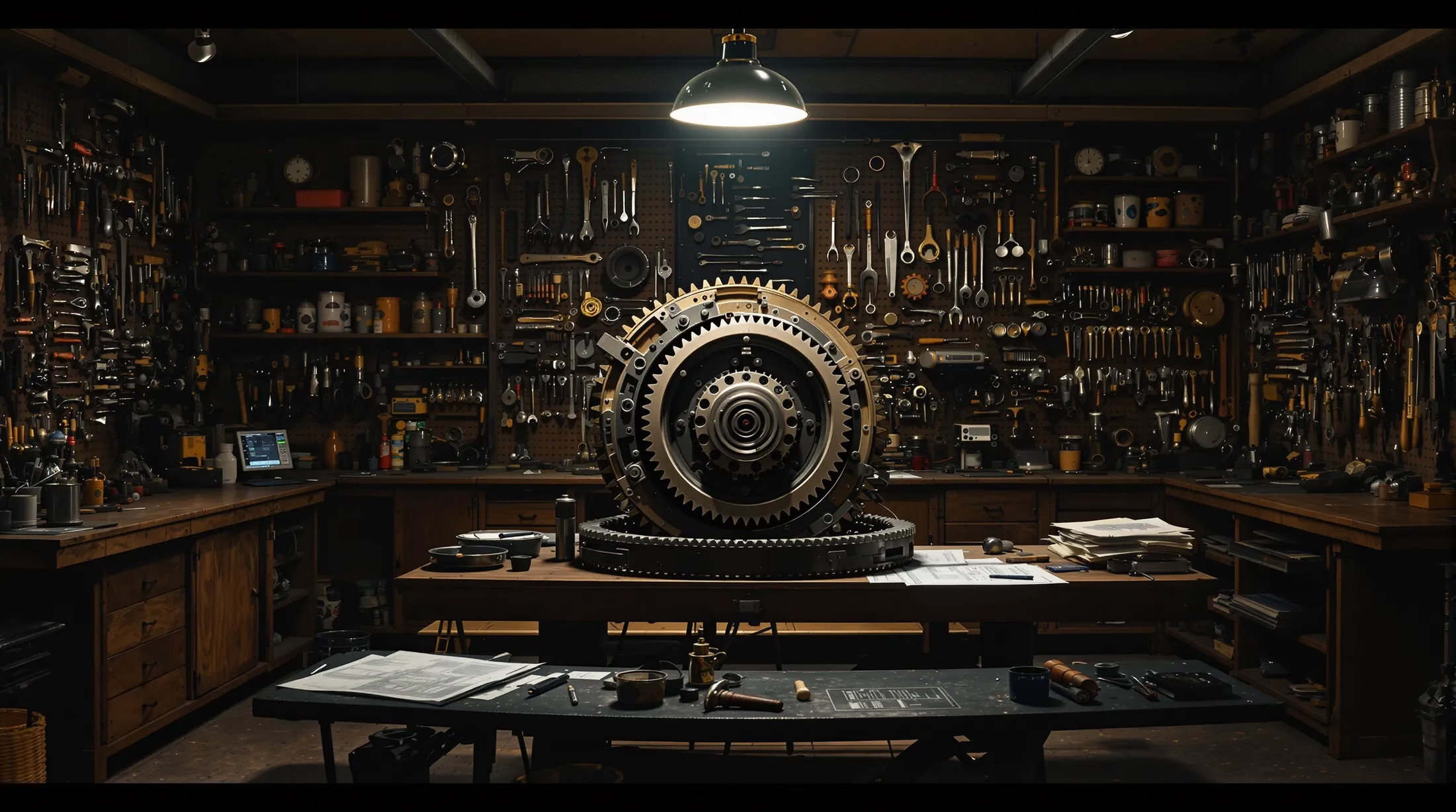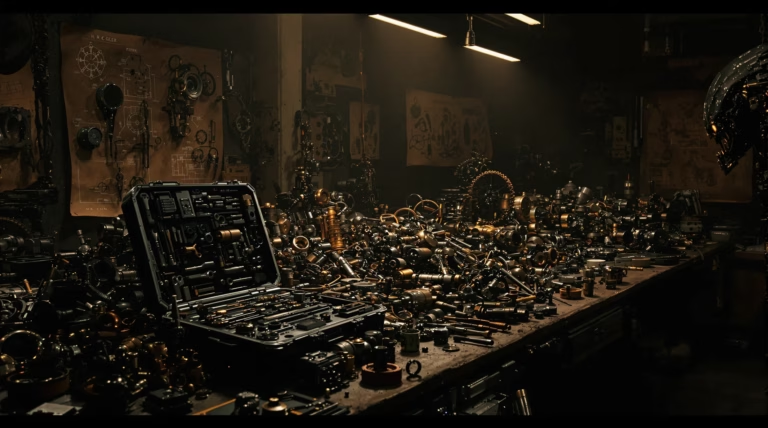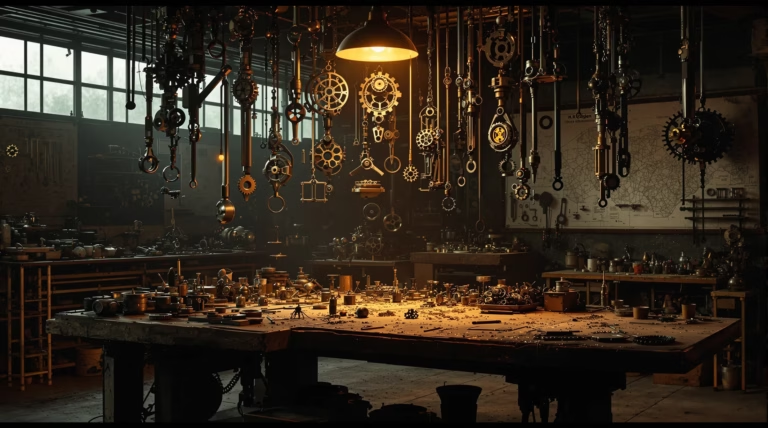Millwright: Understanding the Role, Duties, and Skills Required
Discover the essential role of millwrights in modern industry – the skilled professionals who keep complex machinery running smoothly across manufacturing plants, refineries, and construction sites. Learn about their responsibilities, required skills, and the evolution of this crucial trade.
What is a Millwright?
A millwright is a highly skilled tradesperson specializing in the installation, maintenance, repair, and dismantling of industrial machinery and mechanical equipment. Working primarily in factories, power plants, construction sites, and refineries, millwrights ensure that complex mechanical systems operate efficiently and safely. They serve as the technical backbone of industrial operations, bridging the gap between engineering designs and functional machinery.
The role demands extensive mechanical knowledge and precise technical abilities, as millwrights often work with equipment requiring extremely tight tolerances. These professionals must interpret complex blueprints, diagrams, and schematic drawings to properly assemble or troubleshoot machinery, handling everything from massive industrial equipment to delicate precision instruments.
Definition and Overview
In the industrial hierarchy, millwrights occupy a crucial position as versatile mechanical experts who keep production facilities running smoothly. Their specialized knowledge of complex mechanical systems and expertise in heavy machinery alignment and calibration distinguishes them from general maintenance workers. A millwright’s expertise encompasses:
- Hydraulic systems maintenance and repair
- Pneumatic system operations
- Mechanical system troubleshooting
- Precision alignment and calibration
- Equipment installation and dismantling
History of the Millwright Profession
The millwright profession has roots dating back centuries, originally referring to craftsmen who designed and constructed mills. These early millwrights were responsible for building water-powered and wind-powered mills used for grinding grain, sawing lumber, producing paper, and fulling cloth. They were the mechanical engineers of their era, combining knowledge of woodworking, basic mechanics, and the harnessing of natural power sources.
Throughout the 20th century, the profession evolved dramatically in response to the Industrial Revolution and technological advances. Modern millwrights now work extensively with steel and metal components, focusing on installing and maintaining prefabricated machinery. Today’s professionals combine traditional mechanical knowledge with expertise in modern industrial technology, including automation systems and computerized controls.
Key Duties and Responsibilities of a Millwright
Millwrights serve as the backbone of industrial operations, handling complex mechanical systems that keep factories and production facilities running. Their primary responsibilities include:
- Reading and interpreting technical diagrams and schematic drawings
- Operating specialized rigging equipment for heavy machinery positioning
- Aligning gears and shafts to precise tolerances
- Connecting motors with couplings and belts
- Testing equipment functionality
- Replacing defective components
- Servicing hydraulic and pneumatic systems
- Performing welding and fabrication tasks
- Maintaining replacement parts inventory
Installation and Maintenance
The installation process represents one of the most critical aspects of a millwright’s job. When new machinery arrives at a facility, millwrights carefully unpack, assemble, and position the equipment according to manufacturer specifications and facility requirements. This process involves precise measurements, leveling, and alignment to ensure optimal functionality.
Regular maintenance forms the cornerstone of ongoing responsibilities, including developing and implementing preventative maintenance schedules. Through consistent, thorough maintenance procedures, millwrights significantly reduce the risk of unexpected equipment failures that could halt production and result in costly downtime.
Troubleshooting and Repair
When machinery malfunctions, millwrights employ systematic diagnostic approaches to identify root causes quickly and accurately. Their troubleshooting process integrates mechanical expertise with advanced investigation techniques, utilizing both sensory observation and technical tools. Skilled millwrights can detect issues through:
- Interpretation of unusual sounds and vibrations
- Analysis of temperature variations
- Assessment of performance irregularities
- Use of diagnostic equipment (vibration analyzers, alignment tools)
- Implementation of thermal imaging technology
The repair responsibilities encompass a comprehensive range of interventions, from basic component replacements to complex system overhauls. During equipment failure, millwrights follow a methodical process:
- Careful dismantling of machinery with detailed documentation
- Assessment of damaged components
- Repair or replacement of affected parts
- Custom fabrication when standard parts aren’t available
- Precise reassembly following documented procedures
- Calibration to manufacturer specifications
- Thorough testing to verify repair effectiveness
Use of Tools and Equipment
Millwrights maintain mastery over an extensive array of tools, ranging from basic hand implements to sophisticated measurement devices. Their essential toolkit includes:
| Tool Category | Examples | Application |
|---|---|---|
| Basic Hand Tools | Wrenches, sockets, screwdrivers, hammers, pliers | Assembly and disassembly tasks |
| Precision Instruments | Micrometers, dial indicators, laser alignment tools | Exact measurements and alignments |
| Heavy Equipment | Forklifts, cranes, welding equipment | Material handling and fabrication |
| Machine Shop Equipment | Lathes, milling machines | Custom part creation |
In specialized settings like turbine rebuilds, millwrights work to extraordinarily tight tolerances – often as precise as 0.001 inch. This demanding combination of manual dexterity and technical equipment operation requires continuous adaptation to evolving technologies in today’s increasingly automated industrial environments.
Physical and Manual Dexterity
The physical demands of millwright work require an exceptional combination of strength and precision. Millwrights must possess robust physical capabilities to handle:
- Heavy component manipulation and positioning
- Operation of industrial equipment
- Navigation of confined machinery spaces
- Extended periods of standing, crouching, and working in challenging positions
- Lifting weights exceeding 50 pounds during installation processes
Manual dexterity plays an equally crucial role in a millwright’s success. Fine motor skills are essential for:
- Performing delicate equipment adjustments
- Aligning bearings with precision
- Calibrating equipment to exact specifications
- Manipulating small fasteners while wearing protective gear
- Assembling intricate mechanical systems
Training and Certification for Millwrights
Professional millwright training combines theoretical knowledge with practical experience through comprehensive apprenticeship programs. The education pathway typically spans several years, incorporating:
- Mechanical concepts and principles
- Safety protocols and procedures
- Shaft alignment techniques
- Rigging and welding methods
- Precision machining operations
- Electrical system fundamentals
- Steel fabrication processes
- Conveyor system maintenance
- Turbine installation procedures
Apprenticeship Programs
The cornerstone of millwright training lies in structured apprenticeship programs, typically lasting 4-5 years. These programs feature:
| Component | Description |
|---|---|
| Practical Training | Hands-on experience with industrial systems under journeyman supervision |
| Theoretical Education | Blueprint reading, technical mathematics, precision measurement |
| Technical Modules | Hydraulics, pneumatics, welding, fabrication, industrial safety |
| Assessment | Practical trade tests and performance evaluations |
Certification Requirements
Professional certification involves comprehensive testing of both theoretical knowledge and practical abilities. Requirements typically include:
- Written examinations covering mechanical principles
- Practical demonstrations of critical millwright tasks
- Specialized credentials for specific equipment or processes
- Safety certifications (fall protection, confined space entry)
- Continuing education to maintain current knowledge
Career Opportunities and Salary Expectations
Millwrights enjoy diverse career paths across multiple industries, with opportunities including:
- Technical specialist positions
- Engineering roles
- Project planning and management
- Supervisory positions as foremen
- Independent contracting
- Vocational instruction
- Specialized industrial consulting
Job Market and Demand
The millwright profession currently experiences strong market demand across North America, driven by two key factors:
- Industrial development and expansion in manufacturing, renewable energy, and infrastructure sectors
- Demographic shifts as experienced millwrights retire, creating significant replacement needs
- Growing demand for professionals skilled in automated machinery maintenance
- Active recruitment of apprentices by employers for knowledge transfer
- Increased opportunities in areas undergoing industrial modernization
The Bureau of Labor Statistics projects sustained employment growth through the coming decade. Millwrights with specialized certifications are particularly marketable in:
- Precision laser alignment
- Vibration analysis
- Programmable logic controllers (PLCs)
- Advanced manufacturing technology
- Industrial automation systems
Salary and Benefits
| Experience Level | Annual Salary Range |
|---|---|
| Experienced Millwrights | $50,000 – $85,000 |
| Journeyman Level | Average $65,000 |
| Supervisory/Specialist Roles | $90,000+ |
| Independent Contractors | $45-$85 per hour |
Comprehensive benefits packages typically include:
- Health insurance coverage
- Retirement plans and pension options
- Paid vacation and sick leave
- Continuing education funds
- Supplemental insurance options
Premium wages are available for millwrights working in specialized sectors like power generation or petroleum refining, with additional earning potential through overtime and hazard pay for remote locations or emergency call-outs.







